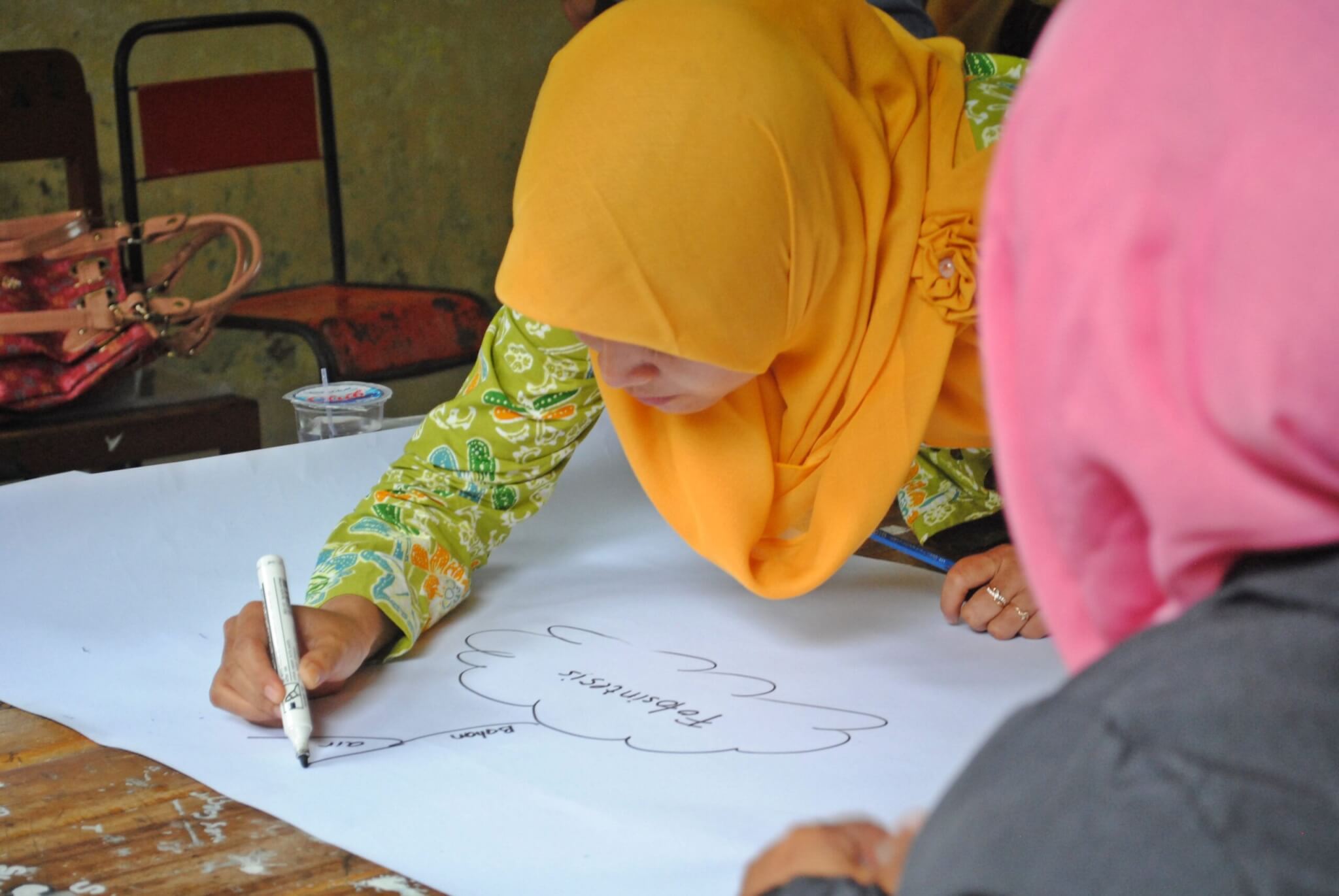Four Arts-Based Methods to Promote Youth Engagement in Evaluation
Our evaluation clients mention it again and again – engaging youth can be a major challenge. But including youth voices when connecting with stakeholders about the impacts and successes of your program is critical.
If you’re feeling confused about how to engage youth in fun, creative, and reflective evaluation activities, consider using arts-based methods. Though some program participants may be excited to engage in report writing, others may be more likely to participate in creative and hands-on activities.
Last November, we conducted a workshop with the Toronto District School Board focused on arts-based evaluation methods. Group reflections focused on how creative activities, such as the four outlined below, can improve youth engagement in evaluation.
1. Photovoice
Photovoice is a participatory method that asks youth to take photographs to capture their experiences, and to reflect on their photos through discussions, written stories or captions, empowering youth to serve as co-researchers by collecting data (photos) that provide insight into their lived experiences.
For example, when photovoice was used to evaluate a community-based cooking program for youth, participants’ photos gave researchers insights into the facilitators (e.g., knowledge of cooking techniques and food literacy) and barriers (e.g., prevalence of fast food options) that affected the program’s impact in the community.
In group discussions during our workshop, participants suggested that photovoice can also involve youth in the development of evaluation questions.
Try photovoice to highlight your program’s community contexts and to showcase these realities to your stakeholders.
2. Digital Storytelling
Digital storytelling is the process of having youth develop short videos to construct, represent, and share their personal stories. Screening these videos to program participants and the wider community can highlight the strengths and value of your programming, leave a lasting impression, and provide youth with an opportunity to develop socio-emotional skills and advocacy tools.
For example, the Stories for [Be]Longing project, which shares the stories of youth with experience in the child welfare system, highlights how being welcomed into families can provide a strong foundation to succeed.
In one video, youth used the game Jenga to represent the importance that supportive family characteristics – such as grace, respect, and encouragement – can play in creating a sturdy tower that stands upright, even in times of turbulence.
In group discussions during our workshop, participants discussed the importance of respecting youth’s confidentiality in digital storytelling projects. Consider hiding identifiable features or characteristics of participants in the videos (e.g., names and faces) and being clear about how the stories will be used, both internally and publicly.
Try digital storytelling to provide youth with an opportunity to express themselves and share their experiences with a variety of stakeholders.
3. Painting and Drawing
Painting and drawing includes image-making (e.g., collage making or portraiture) to help youth communicate their experiences in a program. These non-digital visual arts methods require few resources and are easy to implement.
For example, one arts program asked youth to draw themselves before participating in their program and after, prompting young people to reflect on what new knowledge and/or skills they had gained. Youth illustrated that they were learning in new ways and felt proud of the creative talents they got to discover and further realize.
In group discussions during our workshop, we reminded participants that a key step in using any arts-based methods is facilitating youth’s interpretation of their art-making. Conversations with youth can facilitate meaning-making when youth explain why they chose to create what they did and the cultural and socio-emotional significance of their images.
Try painting and drawing to explore ideas that are difficult for youth to communicate, or to learn from youth’s self-perceptions, pre- and post- program intervention.
4. Mind Mapping
Mind mapping is a popular evaluation tool that asks youth to create a diagram to visualize ideas or concepts. The tool is a form of radiant thinking: using lines and symbols to connect ideas and offer a logical way to develop and organize a lot of inter-related information.
For example, to determine youth’s perceptions of Instagram, researchers asked 500 high school students to illustrate what they liked and disliked about the app using a mind map. Researchers summarized the themes in the mind maps to suggest ways that Instagram could be used as a teaching tool.
In group discussions during our workshop, participants reflected on how mind mapping could help their teams make youth-informed decisions when planning their evaluation, including deciding what questions and tools they should utilize. They also felt this tool could help them analyze and identify key themes to include in reports.
Try mind mapping when you think youth have a lot to share about your program; this approach may help in identifying common themes and ideas across participants.
Youth’s creations can be included in reports and other resources that you share with stakeholders. Conversations you have during the art-making and meaning-making processes can also help shape your future evaluation planning and include youth’s ideas in your findings. If you’re not sure which arts-based method to include in your program evaluation, schedule a meeting to connect with a member of our team – we’re always happy to help!
Photo by Husniati Salma on Unsplash.


